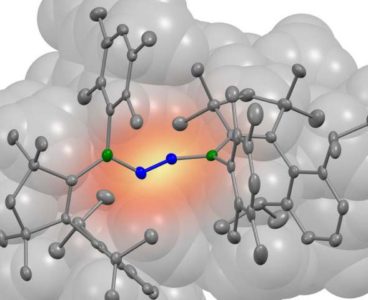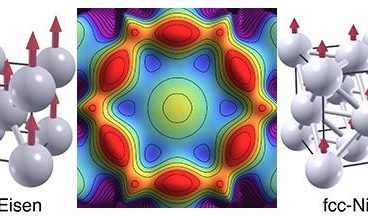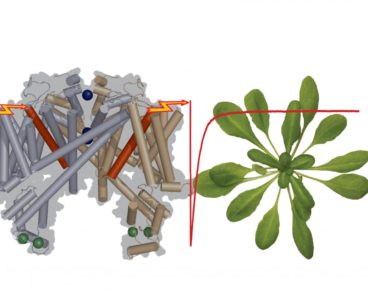Majorana particles are very peculiar members of the family of elementary particles. First predicted in 1937 by the Italian physicist Ettore Majorana, these particles belong to the group of so-called fermions, a group that also includes electrons, neutrons and protons. Majorana fermions are electrically neutral and also their own anti-particles. These exotic particles can, for…
Algae’s ‘Third Eye’ Functions as Light Sensor
Just like land plants, algae use sunlight as an energy source. Many green algae actively move in the water; they can approach the light or move away from it. For this they use special sensors (photoreceptors) with which they perceive light. The decades-long search for these light sensors led to a first success in 2002:…
Newly Designed Molecule Binds Nitrogen
Wheat, millet and maize all need nitrogen to grow. Fertilisers therefore contain large amounts of nitrogenous compounds, which are usually synthesised by converting nitrogen to ammonia in the industrial Haber-Bosch process, named after its inventors. This technology is credited with feeding up to half of the present world population. Air consists of nearly 80 percent…
Cancer Detection With Sugar Molecules
Galectins are a family of proteins that have become a promising source of cancer research in recent years. A representative thereof is galectin-1. It sits on the surface of all human cells; on tumor cells, however, it occurs in enormous quantities. This makes it an interesting target for diagnostics and therapy. “Among other things, it…
Chances to Treat Childhood Dementia
Quantum Mechanics Inside Earth’s Core
Without a magnetic field life on Earth would be rather uncomfortable: Cosmic particles would pass through our atmosphere in large quantities and damage the cells of all living beings. Technical systems would malfunction frequently and electronic components could be destroyed completely in some cases. Despite its huge significance for life on our planet, it is…
Breakthrough in Spintronics
Pathogen That Causes ‘Sleeping Sickness’ Promising Target for Therapy
The life-threatening African trypanosomiasis, also called sleeping sickness, is caused by protozoa of the species Trypanosoma brucei. A team at the Biocentre of the Julius-Maximilians-Universität (JMU) Würzburg in Bavaria, Germany, studies the pathogens and has now reported exciting news: The trypanosomes have a so far unknown enzyme which does not exist in humans and other vertebrates.…
How Plants Sense Electric Fields
The cells of plants, animals and humans all use electrical signals to communicate with each other. Nerve cells use them to activated muscles. But leaves, too, send electrical signals to other parts of the plant, for example, when they were injured and are threatened by hungry insects. “We have been asking ourselves for many years…






